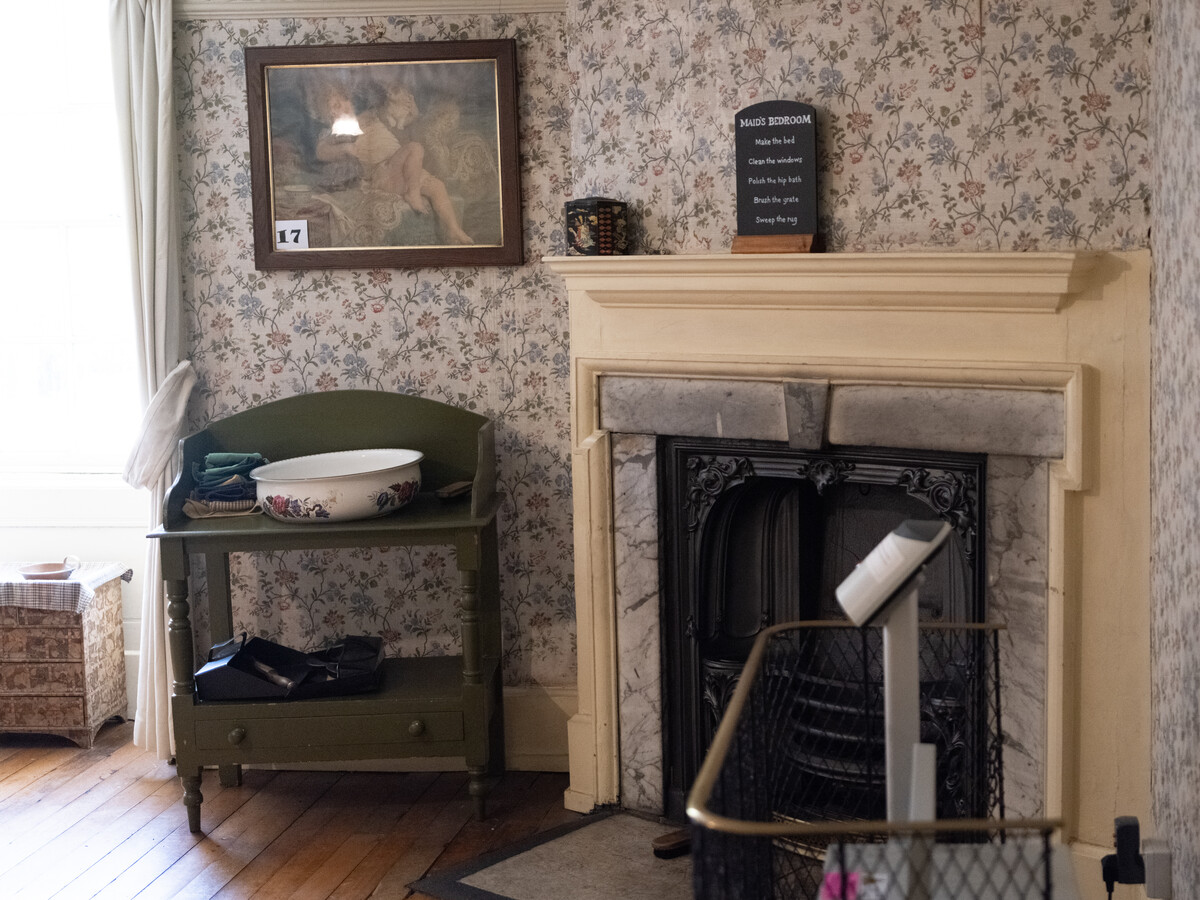Author: Andrew Bradstreet
Directions: Leave the Maid’s Room and enter the room next door.
Transcript
Narrator: From at least 1911, this room was occupied by Ellen Thomas-Stanford’s Lady’s Maid. Emmy Muntwyler. After the Butler and Housekeeper, Emmy had the next highest position in the servants’ hierarchy. A lady’s maid occupied a special place and generally had her own comfortable room, as you can see, with decent furniture and space for working on small dress items. As well as receiving a wage and the opportunity to accompany her mistress on any travels, Emmy would be given her mistress’s cast-off clothes to do with as she pleased. No uniform was worn (unlike the junior servants), but simple, clean, and neat attire was expected.
Emmy: I always rise in good time, to bring my mistress her early morning cup of tea, and arrange her room, prepare her bath — the housemaids bringing the cans of water, hot or cold — and I lay in readiness everything required for dressing. I have my own breakfast and am ready to attend to my mistress directly her bell summons me. Then I dress her hair, help her to put on her clothes and do all the finishing touches to her toilet.
When my mistress has gone downstairs, I make her room tidy and put out all the things in readiness for what may be required throughout the day. I will have discussed with Mrs Stanford which outfits she wishes, have got them prepared and help her change and style her hair when necessary. After each set of clothes is discarded, I decide whether they need washing with the general laundry or careful handwashing by myself. I then brush and press them before storing. I must keep my mistress’s wardrobe in repair and so in my room I mend gloves, sew buttons on boots etc., and do all the dressmaking and millinery expected of me. I also wash the laces and very fine linen my mistress wears. As an upper servant, though, I am waited upon by the under-housemaids who clean my room and make-up my fire if needed. (Which is just as well really as I could not see where I would get the time to do it – so busy I am attending to my mistresses wardrobe.)
Later, I lay out the dress and things required for the evening toilet, and make sure I am ready waiting for my mistress when she comes up to change for dinner. If my mistress is out for the evening, I will sit up for her, and assist her to undress, putting away, with care, the dress, ornaments, flowers, and all the rest of the wearing apparel.
Narrator: A lady’s maid, like Emmy, was therefore meant to understand all aspects of fashion and ensure that her mistress had everything that she needed to maintain exemplary standards of appearance. Her mistress was expected to present a model public image, and by the Edwardian era, her daily schedule might require five or six changes of outfit – from comfortable, informal morning robes for taking breakfast; elegant, feminine outfits for paying social calls; handsome gowns for formal dinners, and beautiful ball gowns to impress.
Many Edwardian Ladies favoured French or French-speaking Swiss maids, as Emmy was, because French was seen as the language of fashion. It also enabled, in this case, Ellen and Emmy to talk privately to each other in French so that the other servants would not be able to understand them. Lady’s maids were intimately involved with their mistresses’ lives like no other servants, except for perhaps gentlemen’s valets. Assisting with beauty and bath preparations and dressing and undressing, they were physically intimate with their mistress, understanding her daily state of health and personal life. Usually better educated than other servants, a lady’s maid was therefore expected to provide intelligent company, often being a frequent companion and occasional confidante.
Emmy was certainly held in high regard as in 1917 she wanted to return home to Switzerland because of the First World War and Charles Thomas-Stanford took pity on her predicament. He wrote to the General in the British Consulate in Paris to help to get her home. As Emmy is not recorded on the 1921 census, we hope she was successful.

